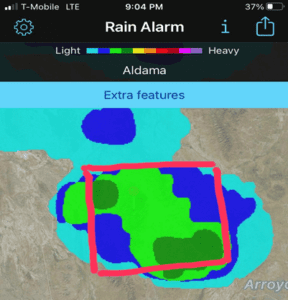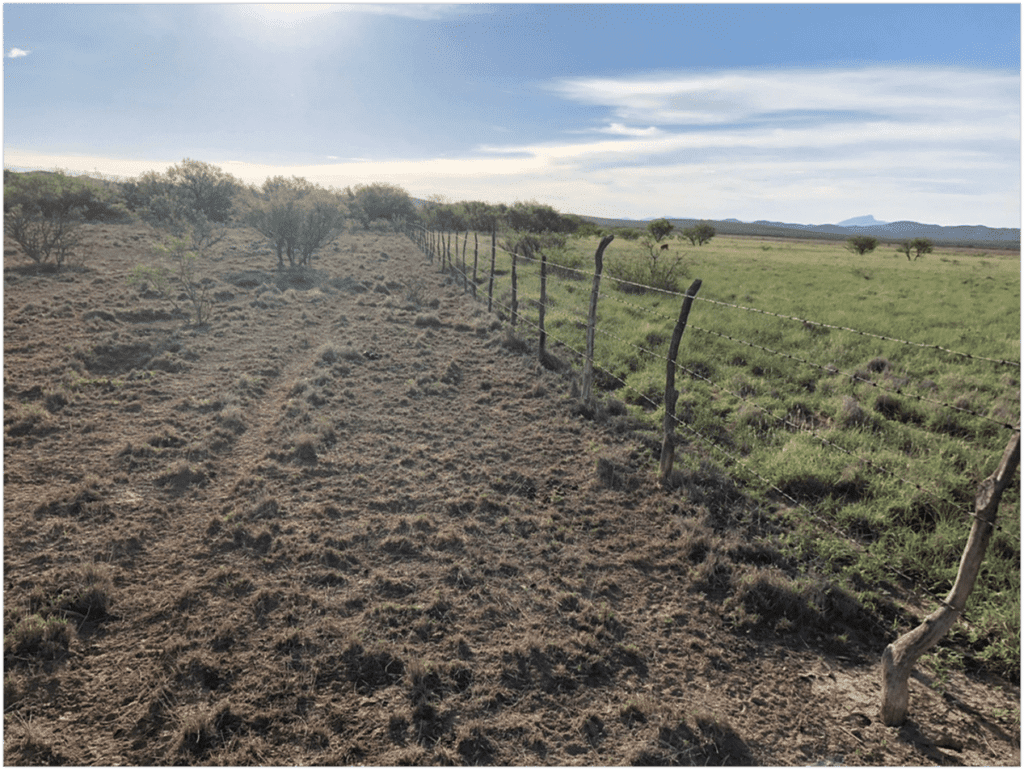There is an interesting and thought-provoking quote from Masanobu Fukuoka, a Japanese farmer and philosopher renowned for his natural farming, that is quite pertinent to climate resiliency. The author of The One Straw Revolution, Fukuoka states, “It was in an American desert that I suddenly realized that rain does not fall from the heavens – it comes up from the ground. Desert formation is not due to the absence of rain, but the rain ceases to fall because the vegetation has disappeared.”
Epic droughts, wildfires so intense that they create their own weather and tragic flooding are all a part of our own creation—by failing to properly manage or steward what we have been blessed with. Soils that cannot infiltrate and retain water lead to either flooding or drought, and in many cases both. In the Western U.S. in 2021, we have seen extreme and exceptional drought, coupled with cloudbursts that caused massive erosion–resulting in drought-to-flooding conditions in mere hours. The good news is there is something we can do about this situation. Our management of the land matters and it can make a huge difference in how the land and atmosphere responds. There is a growing body of evidence that supports the contention that regenerative management is a game changer on the ground and in the sky.
Rainmaking Microbes
Microbes are everywhere, including in the clouds. Scientific studies are now showing that they play an important role in creating precipitation. Microbes from the soil and plants can go airborne and facilitate a process called bio-precipitation. These microbes include bacteria, fungi and tiny algae.
For a cloud to produce precipitation that falls to earth as rain or snow, ice particle formation in the clouds is required. Just a decade ago it was thought that only small mineral particles, or other inert particles, could serve as nuclei for condensation to occur. However, we now know that aerosols in the form of microbes can catalyze ice particle formation that trigger precipitation.
The evidence is building that vegetation and soils are a crucial source of atmospheric biological ice nucleators in precipitation. They may, in fact, be the most efficient ice-forming catalysts in precipitation, not airborne mineral particles. These “rainmaking” microbes are significant influencers of the water cycle. They can also travel long distances in the atmosphere for dispersal on a global scale.
Now we know there are trillions of airborne microbes that perform this task as well. They even do it better than mineral particles because they catalyze precipitation at higher temperatures than the mineral particles.
Rain in the Desert
The Chihuahuan Desert of Northern Mexico, Southwest Texas, and Southeastern New Mexico, typically receives about eight inches of rainfall annually, all within a short “rainy” season of three months. This has been the norm for many decades now, but this desert once was a thriving grassland that supported large herds of bison, elk, and antelope, along with predators such as wolves, mountain lions and bears. Historical accounts also state that there were abundant beavers and river otters across the region.
Today, the Chihuahuan Desert bears no resemblance to that thriving grassland. Most ranches in the region require 150 acres or more to support a single cow/calf unit. Because water is scarce and a limiting resource in grazing livestock, the ability to capture and retain moisture is key to ranching success.
Today, there are ranches in this vast desert that are not only infiltrating and retaining most of the precipitation that does fall, but they are now creating their own rainfall through regenerative practices. The evidence has been stacking up for the last 4-5 years and the impact of the “greening of the desert” has affected weather patterns over these ranches.
Las Damas Ranch

Radar image showing rain over the Las Damas Ranch.
Multiple-year radar data and actual measured precipitation indicate that the vegetation being produced on these regenerative ranches is generating rain that is highly concentrated over these green areas (see left). The average rainfall for this region has averaged seven inches for the past three years. Therefore, it is critically important that ranches in this desert first get as much rainfall as possible and then capture that rainfall through infiltration.
Seven inches on one ranch does not produce the same results as seven inches on another ranch. For example, if Ranch 1 has been implementing regenerative practices and can infiltrate the majority of that seven inches, their results are far different than Ranch 2 that manages conventionally and infiltrates 50% or less of that seven inches.
The ranches in these case studies have averaged between 1-2 inches additional rainfall compared to the regional average and in the desert where seven inches is the total, one more inch is a 14% increase and two is a 28% increase.
More importantly, these ranches have infiltrations rates 300% greater than neighboring ranches, so, not only are they getting more total rainfall, they are catching and keeping more of it. In addition, these ranches are observing a higher frequency of heavy morning dews. While it is very difficult to measure the amount of moisture in a dew, even trace amounts of moisture can be moved into the soil profile. By maintaining significantly more plant residue compared to their neighbors, much of the dew on the regenerative ranch does not evaporate, but infiltrates. On neighboring ranches, however, most dew evaporates quickly after the morning sun heats up the atmosphere.
Neighboring ranches on the trailing edge of these rainstorms are getting more rain on those portions of their ranches, until the energy of the rainstorm plays out. Unfortunately, the neighboring ranches cannot take advantage of this additional rainfall due to poor water infiltration capacity.
The radar image above captured by Alejandro Carrillo on his cell phone shows the high concentration of rain occurring centrally on his ranch, located in the municipality of Aldama in Chihuahua, Mexico. The heavy concentration of rain is directly over the grasslands Alejandro has restored through his regenerative grazing practices. He has been observing these patterns for the past several years now. For many years, his neighbors accused Alejandro of getting more rain than they did, using that as the excuse for why his pastures were so much better. Initially, that was not the case, but now Alejandro truly is getting more rain than the neighboring ranches.
Alejandro has carefully documented the formation of storm clouds over his ranch where little-to-no storm clouds form over his neighbor’s ranches (see below). This has been happening with more frequency over the past four years.

Rain clouds forming over the Las Damas Ranch.

Rain falling over the Parritas Ranch, Chihuahua
Other regenerative ranchers in northern Mexico have experienced similar results and weather patterns. The Parritas Ranch is getting rains that their conventional neighbors do not. Often, this provides a very stark contrast as noted from the picture of a fence line comparison between the Parritas Ranch and the neighboring ranch (see right). Perhaps a partial explanation resides in rain-making microbes?
Rancho El Refugio in Chihuahua is also reporting encouraging weather results from their regenerative efforts. Similar to Las Damas, radar images show rains centered over the ranch with little else showing up on the radar within a 200-mile-plus radius. Rancho El Refugio also has a stark fence line comparison that shows far more green, growing plants on their side of the fence compared to their neighbor (see below). Their grazing management is significantly better, but they are also creating the conditions for precipitation to occur more frequently.

Fenceline comparison- Rancho El Refugio
Each of these ranches has fully implemented regenerative principles and practices and all have experienced significant improvement in net profits, forage biomass production, plant species diversity—and they’ve increased their livestock numbers on the same acres. Their ecosystems are substantially better, as evidenced by an explosion in beneficial insect and bird populations, as well as many other wildlife species.
Summary
New evidence and research regarding the impact of soil microbes on the creation of precipitation can be accurately characterized as a game changer in our understanding of what it takes to produce rain across the globe. The immediate question is: What can we do to create favorable situations for this ice-nucleation cycle to occur? The answer resides in managing more acres regeneratively. The evidence presented from Chihuahuan ranchers is both strong and compelling. What they are observing and documenting, is not happenstance or mere correlation. It has occurred far too often and too consistently for that to be the case.
It’s increasingly clear that when it comes to rainmaking (and rain retention) we reap what we sow—in the soil and in the sky.
This article first appeared in the 9th Edition of Green Cover's Soil Health Resource Guide.
Also check out the 10th edition, our latest Soil Health Resource Guide, over 90 pages packed with scientific articles and fascinating stories from soil health experts, researchers, farmers, innovators, and more! All as our complimentary gift to you, a fellow soil health enthusiast!
